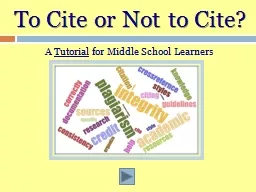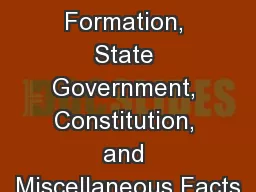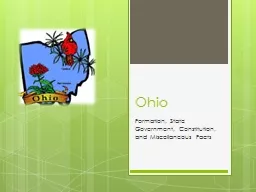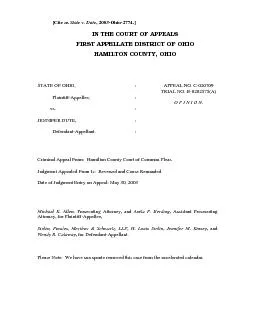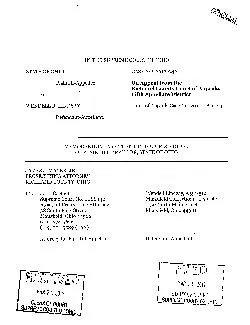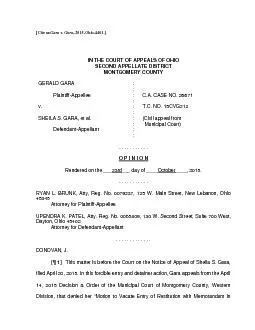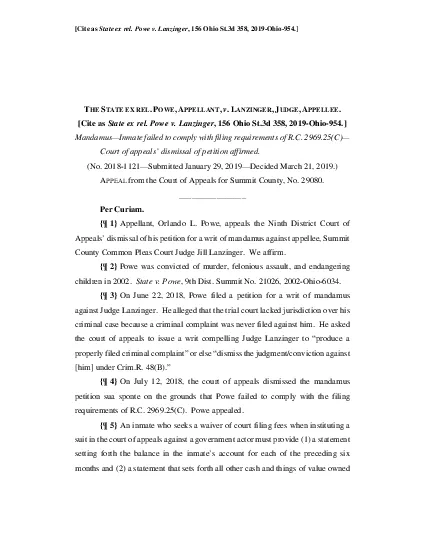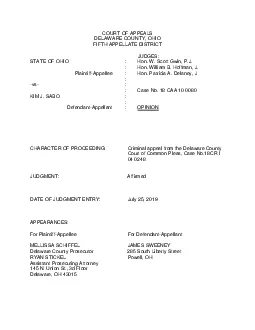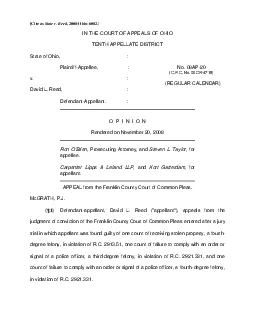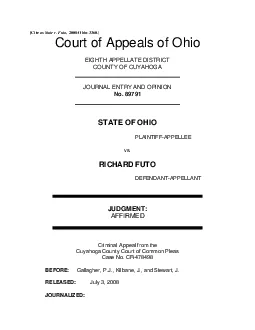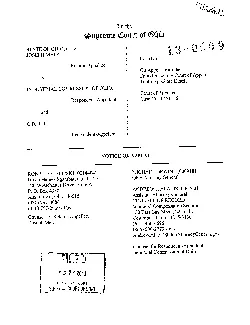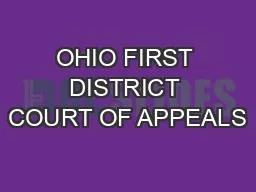PDF-[Cite as State v. Shook, 2014-Ohio-3987.]IN THE COURT OF APPEALS OF OH
Author : danika-pritchard | Published Date : 2015-10-21
STATE OF OHIO PLAINTIFFAPPELLEE CASE NO 81401 v JOHN TIMOTHY SHOOK O P I N I O N DEFENDANTAPPELLANT Appeal from Logan County Common Pleas Court Trial Co
Presentation Embed Code
Download Presentation
Download Presentation The PPT/PDF document "[Cite as State v. Shook, 2014-Ohio-3987...." is the property of its rightful owner. Permission is granted to download and print the materials on this website for personal, non-commercial use only, and to display it on your personal computer provided you do not modify the materials and that you retain all copyright notices contained in the materials. By downloading content from our website, you accept the terms of this agreement.
[Cite as State v. Shook, 2014-Ohio-3987.]IN THE COURT OF APPEALS OF OH: Transcript
Download Rules Of Document
"[Cite as State v. Shook, 2014-Ohio-3987.]IN THE COURT OF APPEALS OF OH"The content belongs to its owner. You may download and print it for personal use, without modification, and keep all copyright notices. By downloading, you agree to these terms.
Related Documents

![PDF-[Cite as State v. Shook, 2014-Ohio-3987.]IN THE COURT OF APPEALS OF OH](https://thumbs.docslides.com/167743/cite-as-state-v-shook-2014-ohio-3987-in-the-court-of-app-577.jpg)
![[Cite as State v. Shook, 2014-Ohio-3987.]IN THE COURT OF APPEALS OF OH](https://thumbs.docslides.com/427867/cite-as-state-v-shook-2014-ohio-3987-in-the-court-of-app.jpg)
